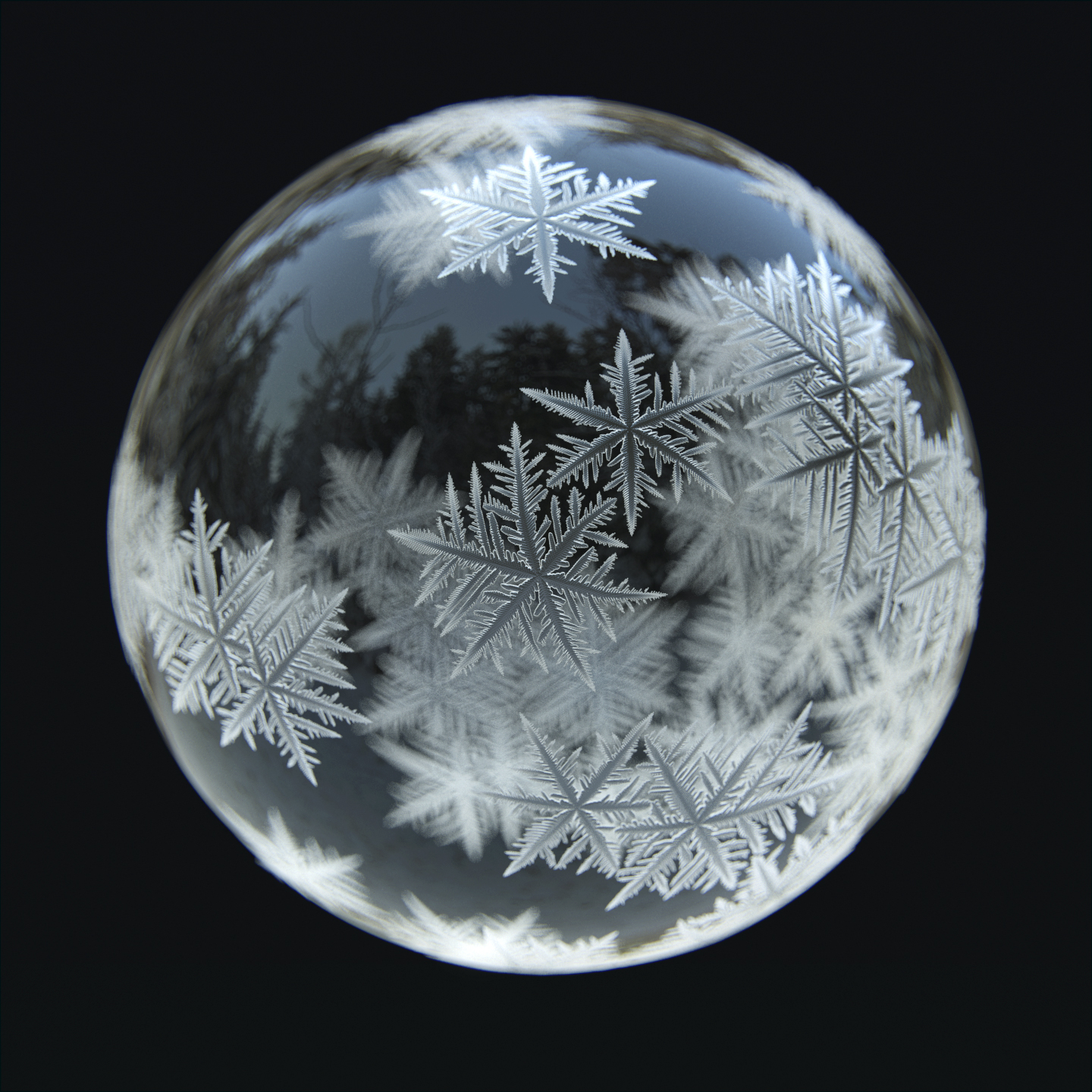We have something special for the upcoming holiday season for you: Snowflakes! This was the very first paper I ever implemented in Houdini – what a feeling! I recorded it a while back in summer but then decided to wait until the right season. As the first snow is hitting the Munich area I guess it is about time to release the tutorial.
The technique stems from Cliff Reiter’s brilliant paper called “A local cellular model for snow crystal growth”. Don’t fret – We’ll do our best and explain what’s actually going on here. In essence it is a rather straightforward yet extremely efficient (and quite clever) cellular automaton we’re building. Hope we didn’t scare you with that previous sentence. Relax – all we’re doing is to simulate small particles of water that are allowed to move in a hex-grid. Enough talk, let’s build it
PATREON SPECIAL: FROZEN BUBBLE

COMMENTS
HanyuShi 7 years, 4 months ago |
Thanks for your sharing! Can I ask where can I find the papers like this one?
I hope I could also makes something from a paper by myself.
Pixelkram 7 years, 4 months ago |
Heyhey,
in this case Google was my friend (I tried finding a specific solution for how to grow a snowflake procedurally) - the hard part here is usually figuring out how something rather mundane is called in scientific terms. E.g. a snowflake is called a snow crystal. However as a general resource offering a wealth of highly interesting papers I can recommend Ke Sen Huang's collection of Siggraph papers: http://kesen.realtimerendering.com/
Cheers,
Mo
HanyuShi 7 years, 4 months ago |
Thanks a lot! It really helps!
raresh 7 years, 4 months ago |
20min with you is like a2:00 webinar
it will be nice to see a beginners tutorial from you on vex
i love your approach to 3d but most of the stuff you are doing is impossible to understand -
i can repeat it and it will work - but i have no idea what i'm doing
Emily Black Eyes 12 months ago |
Hi,
I know all your comments are from 6 years ago but I really hope you see my question!
I am learning Houdinifx and I am enjoying so much going through each step and unraveling the complexities to understand the Vex codes. However, ironically when I get to the simplest part, the step @17:00 after setting up the blast node. When I press play nothing happens :I
I've gone though again and again. I have an up to date version of Houdini Indie. I feel like the answer must be something so simple and if there is anyone out there who knows my issue.. Please let me know.
Thnx for your tutorial, it's super cool!
Emily Black Eyes 12 months ago |
I just wanted to add that I believe my problem is something to do with settings or configurations that could potentially affect playback. Because even with the downloaded scene file the playback is non responsive.. !:)
Emily Black Eyes 12 months ago |
Or, (yes, my 3rd comment) does it have something to do with saving the solver node? what am I missing? it seems the answer would be so simple.
Nilblabla 5 months, 2 weeks ago |
I'm finding the same issue, sadly. I downloaded the scene file with everything already set up, but the problem seems to persist, so I believe it must have something to do with us using updated versions of Houdini. Otherwise, I no longer know what to look for...
Please log in to leave a comment.